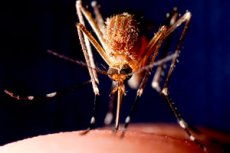New publications
WHO warns of risk of global chikungunya virus epidemic
Last reviewed: 27.07.2025

All iLive content is medically reviewed or fact checked to ensure as much factual accuracy as possible.
We have strict sourcing guidelines and only link to reputable media sites, academic research institutions and, whenever possible, medically peer reviewed studies. Note that the numbers in parentheses ([1], [2], etc.) are clickable links to these studies.
If you feel that any of our content is inaccurate, out-of-date, or otherwise questionable, please select it and press Ctrl + Enter.

The World Health Organization said on Tuesday there was a serious risk that the chikungunya virus would cause a major epidemic worldwide and called for urgent action to prevent that scenario.
WHO said it was seeing the same early signs as before a major outbreak two decades ago and was seeking to prevent history from repeating itself.
Chikungunya is a mosquito-borne viral disease that causes fever and severe joint pain that can be debilitating. In some cases, the disease can be fatal.
"Chikungunya is a disease that few people know about, but it has already been detected and transmitted in 119 countries around the world, putting 5.6 billion people at risk," said Diana Rojas Alvarez of the WHO.
She recalled that from 2004 to 2005, a major chikungunya epidemic swept through the Indian Ocean islands and then spread throughout the world, infecting nearly half a million people.
"Today, WHO sees the same picture: since the beginning of 2025, Réunion, Mayotte and Mauritius have reported large outbreaks of chikungunya. It is estimated that a third of the population of Réunion is already infected," she said at a briefing in Geneva.
"We are sounding the alarm"
The symptoms of chikungunya are similar to those of dengue fever and the Zika virus, which makes diagnosis difficult, the WHO noted.
Rojas Alvarez added that, as it did 20 years ago, the virus is now spreading to other regions, including Madagascar, Somalia and Kenya.
"Epidemic transmission is also occurring in South Asia," she added.
Imported cases have been reported in Europe, linked to outbreaks on Indian Ocean islands. Local transmission has been detected in parts of France, and suspected cases have been identified in Italy.
“As these same patterns of spread were observed in the epidemic after 2004, WHO calls for urgent action to ensure that history does not repeat itself,” Rojas Alvarez stressed.
Although chikungunya has a case fatality rate of less than 1%, with millions of cases this could mean thousands of deaths.
"We sound the alarm early so that countries can prepare, detect cases and strengthen health systems to avoid very large outbreaks," she said.
Tiger Mosquitoes and Climate Change
Chikungunya is transmitted to humans through the bites of infected female mosquitoes, primarily Aedes aegypti and Aedes albopictus.
The latest species, known as the "tiger mosquito", is expanding its range north as the planet warms due to climate change.
These mosquitoes are most active during daylight hours, especially in the morning and late afternoon.
WHO urged people to protect themselves with repellents and to avoid allowing water to stagnate in buckets and other containers where mosquitoes can breed.
